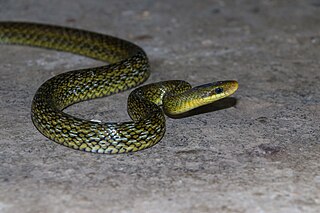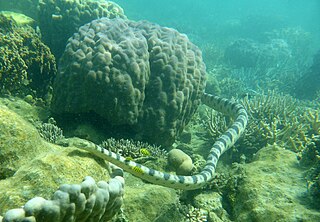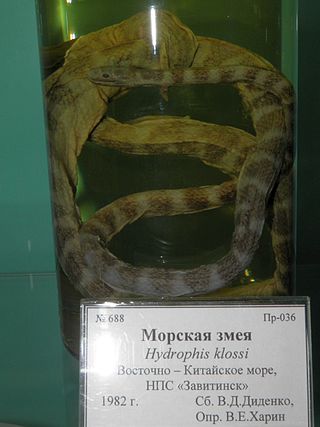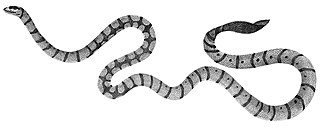
Amphiesma monticola, also known as the Wynad keelback, is a harmless colubrid snake species endemic to the Western Ghats of India, where it has been recorded in the Kodagu and Wayanad regions.

Boiga trigonata, commonly known as the Indian gamma snake or common cat snake, is a species of rear-fanged colubrid endemic to South Asia.

Platyceps gracilis, commonly known as the graceful racer or slender racer, is a species of snake endemic to West India.

The trinket snake, also known commonly as the common trinket snake, is a species of nonvenomous constricting snake in the family Colubridae. The species is native to southern Central Asia.

Elaphe hodgsoni, also known commonly as Hodgson's rat snake and the Himalayan trinket snake, is a species of snake in the family Colubridae. The species is native to parts of Asia around the Himalayas.

Sibynophis collaris, commonly known as the common many-toothed snake,Betty's many toothed snake or the collared black-headed snake, is a species of colubrid snake endemic to South and East Asia.
Uropeltis myhendrae, commonly known as Boulenger's earth snake, the Mahendragiri earth snake, and the Myhendra Mountain uropeltis, is a species of snake in the family Uropeltidae. The species is endemic to India.
Uropeltis nitida is a species of nonvenomous shieldtail snake. The species is endemic to southern India. There are no subspecies that are recognized as being valid.
Smith's earth snake, also known commonly as the violet shieldtail, is a species of nonvenomous snake in the family Uropeltidae. The species is endemic to India.

Stokes's sea snake is a large species of sea snake in the family Elapidae. It is sometimes placed in its own genus Astrotia. The species is endemic to tropical Indo-Pacific oceanic waters.

The olive-headed sea snake, also known as the greater sea snake, is a species of venomous sea snake in the family Elapidae.

Hydrophis klossi, commonly known as Kloss's sea snake, is a species of sea snake in the family Elapidae. Like all other sea snakes, it is venomous. The species is endemic to the Indian Ocean.

Hydrophis melanocephalus, commonly known as the slender-necked sea snake, is a species of venomous sea snake in the family Elapidae.

Hydrophis spiralis, commonly known as the yellow sea snake, is a species of venomous sea snake in the family Elapidae.
Hydrophis stricticollis, commonly called the collared sea snake, is a species of venomous sea snake in the family Elapidae.

Jerdon's sea snake is a species of venomous sea snake in the subfamily Hydrophiinae of the family Elapidae. The species is native to the Indian Ocean.
Hydrophis annandalei, commonly known as Annandale's sea snake or the bighead sea snake, is a species of venomous snake in the subfamily Hydrophiinae of the family Elapidae. The species, which is sometimes placed in its own genus Kolpophis, is native to parts of the Indian Ocean.

The spine-bellied sea snake, also commonly known as Hardwicke's sea snake and Hardwicke's spine-bellied sea snake, is a species of venomous sea snake in the family Elapidae. The species is native to the Indian Ocean and the western Pacific Ocean.
Hydrophis cantoris, also known commonly as Cantor's narrow-headed sea snake and Cantor's small-headed sea snake, is a species of venomous sea snake in the family Elapidae.

Uropeltis shorttii, also known commonly as the Shevaroy Hills earth snake and Shortt's shieldtail snake, is a species of non-venomous snake in the family Uropeltidae. The species is endemic to the southern Eastern Ghats of India. This species was first described as Silybura shorttii by British naturalist Richard Henry Beddome in 1863. It is found only in the Shevaroy Hills of Salem district in Tamil Nadu state in South India. For a long time, this species was misclassified into Uropeltis ceylanica, a snake endemic to the Western Ghats, till a recent taxonomic study proved it to be a distinct species with a very narrow geographic range. It is a burrowing snake, presumed to be nocturnal, feeding on soft-bodied worms. It becomes active during the rains. U. shorttii has most recently been assessed for The IUCN Red List of Threatened Species in 2019, and is listed as "Critically Endangered" under criteria B1ab(iii).














